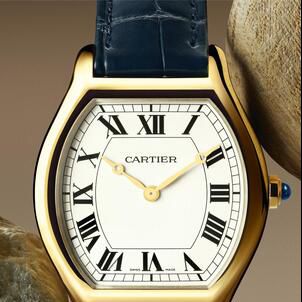
- BEST IN ONLINE MEDIA (MAGAZINE)
- 2013 & 2010 GOLD AWARD WINNER
- ASIAN DIGITAL MEDIA AWARDS
- WEBSITE OF THE YEAR - GOLD
- MULTIMEDIA PROJECT OF THE YEAR
- 2017 MPAS AWARDS
ASIA'S PREMIER LUXURY & LIFESTYLE MAGAZINE
SENATUS.NET
 | 11 April 2024
| 11 April 2024
Cartier Privé,the annual exercise in which Cartier re-imagines an archival piece for these contemporary times, enters its eighth edition this year. Having unveiled rare watches in previous years, including the Crash, the Tank Cintrée and the Tonneau, the Maison turns its attention in 2024 to the Tortue.
The Tortue was first created in 1912. It remains one of Cartier’s major creations as the watchmaker of shapes. This year, Cartier has chosen to introduce the single-button chronograph complication as well as the simple “hours/minutes” versions.
The new Tortue is faithful to the original design, but has been subtly reworked. With horns stretched along the strap and a slimmer profile, the watch has flourished and been made lighter. The new timepieces pay tribute to the very first model, featuring apple-shaped hands and a rail-track that follows the iconic shape of the watch around the hour markers, making the dial even easier to read.
The hours/minutes version of the Tortue watch is available in platinum or yellow gold in a limited edition of 200 numbered pieces. And for the first time in the Cartier Privé collection, there is also a platinum hours/minutes version set with brilliant-cut diamonds available in a limited edition of 50 numbered pieces.
On the gold model, the dial has a finely grained golden finish and the winding crown is set with a sapphire cabochon. The strap is made of blue alligator leather and fastens with an ardillon buckle. The Roman numerals on the platinum watches are rhodium-plated. The attention to detail creates a play of contrasts and nuances. The silvered opaline dial and winding crown are enhanced by a brilliant diamond set on the watch, a true jewellery signature, and by a ruby cabochon on the platinum version that creates a chromatic harmony dear to the Maison.
Both these models feature a red alligator leather strap that fastens with an ardillon buckle, set with 25 pavé-set diamonds.
All these models beat to the rhythm of the Manufacture mechanical movement with manual winding calibre 430 MC, whose dimensions have been adapted to fit the Tortue. The manual-winding 430 MC movement is one of the thinnest movements by Cartier.
The release also includes the Tortue Monopusher Chronograph, which features the new complication making its debut in the collection: the single-button chronograph and its Manufacture 1928 MC calibre. First introduced on a Tortue watch in 1928, this complication was notably reinterpreted in 1998 as part of the Collection Privée Cartier Paris with the same sophisticated details in this new version, notably the blued-steel apple-shaped hands, a hollowed-out central seconds hand and triangular motifs on the four corners of the dial. In doing so, Cartier pays homage to a rare and original aesthetic.
To enhance the legibility of the dial and make chronographic precision even more accessible, the rail-track has been placed on the outside of the Roman numerals. Free of any additional detail, the entire dial space is devoted to the two counters.Start, stop and reset: the three functions are concentrated in a single push-button integrated into the crown and is activated in a single motion. The movement is 4.3 mm thick, making it the Maison’s thinnest chronograph.
The Tortue Monopusher Chronograph is available in two limited editions of 200 numbered pieces. The platinum watch is characterised by its play of nuances: the blued effect of the counters, the silvered opaline dial and
the rhodium-plated Roman numerals. It embodies the chromatic harmony of platinum and ruby cabochon so dear to Cartier. The yellow gold version features gold-finish apple-shaped hands, a grained golden-finish dial and a winding mechanism adorned with a sapphire cabochon
SENATUS is a registered trademark of SENATUS PTE LTD. The material on this site may not be reproduced, distributed, transmitted, cached or used otherwise, except as expressly permitted in writing by SENATUS.






















